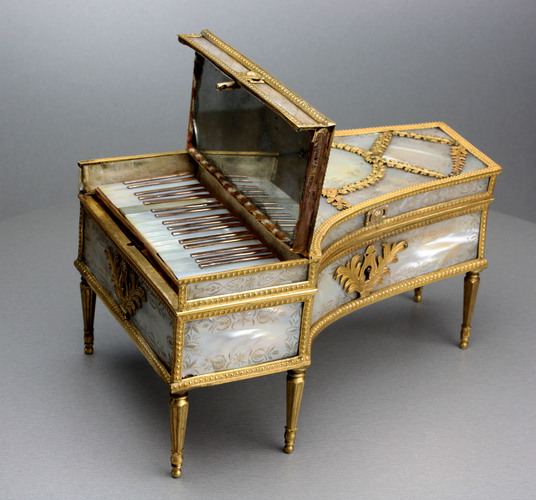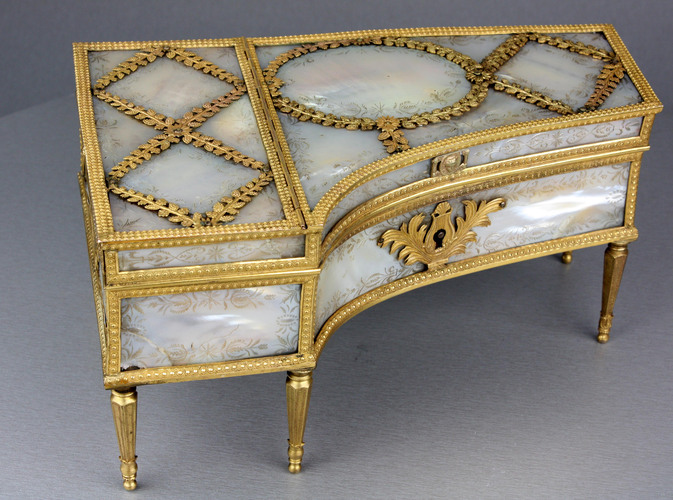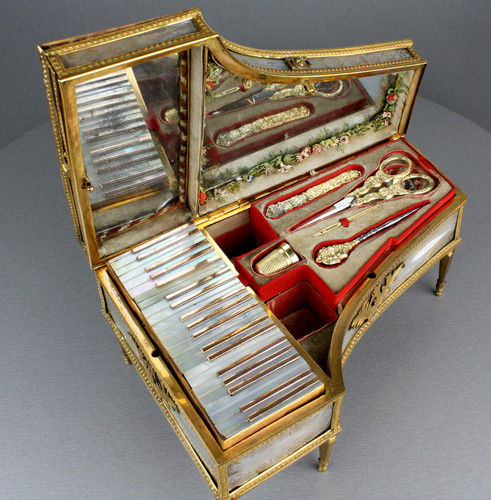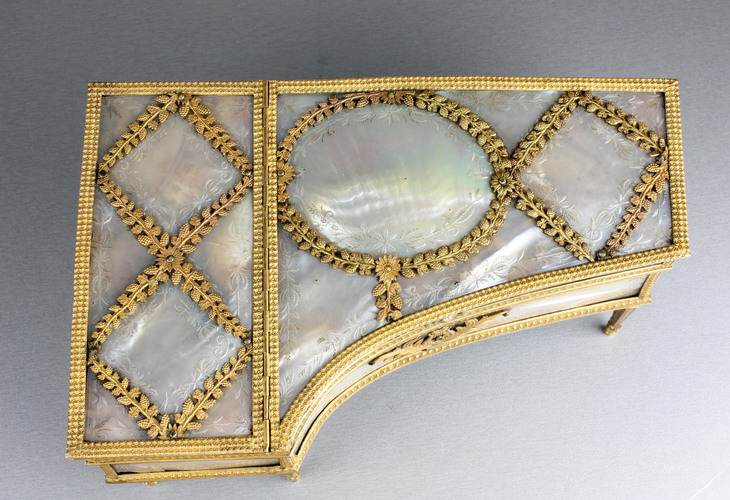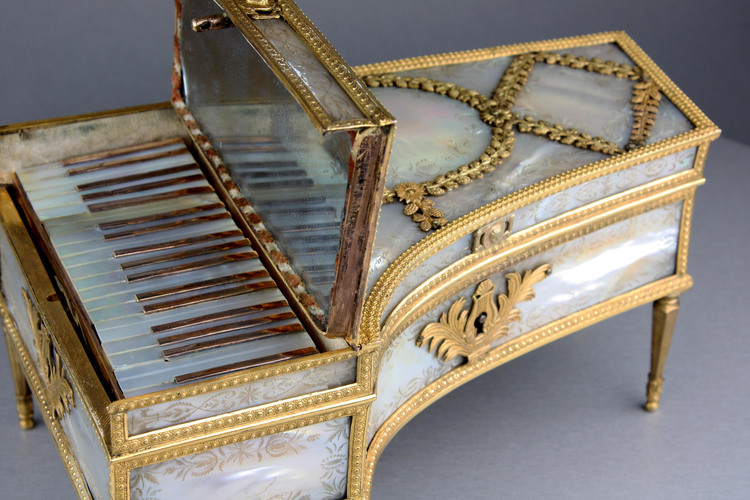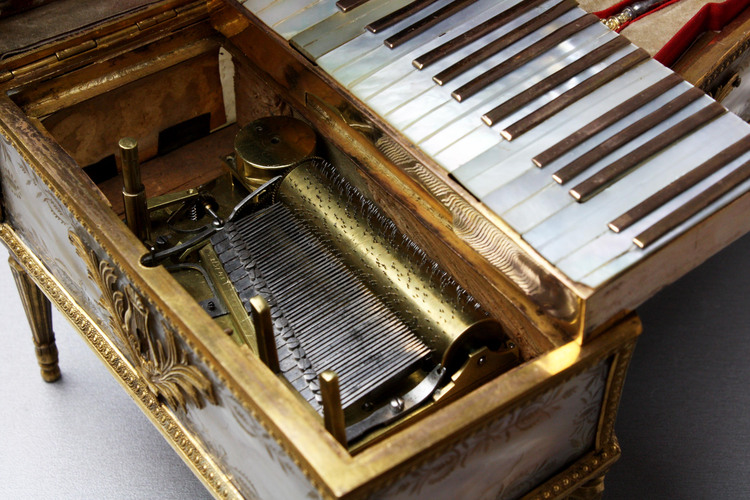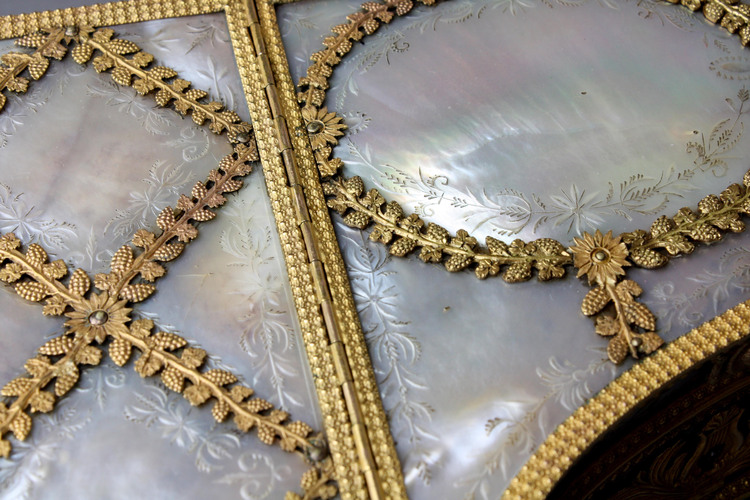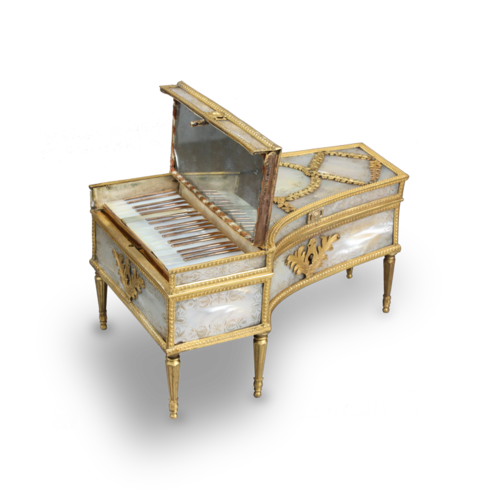
Palais Royal piano-form musical necessaire
A large, elegant and fine Court period Palais Royal piano-form musical necessaire, intricately decorated in gilt bronze and engraved mother-of-pearl.
France circa 1810-15.
The Grand Piano case exterior in the sought after large Court standard size with gilt metal framed and engraved mother-of-pearl panelled case.
The main lid of low domed profile comprising one oval and thee diamond framed panels all with finely chased bezels before floral beaded frames in matching swags, crests and leaves with fine engraving to each mother-of-pearl panel, highly polished to reveal the full depth of colour from the shell in tones of red, green, blue and purple.
To the sides the opening lid has shallow panels of mother-of-pearl, while the wider and deeper base panels have matching engraved detail with opposing lyres, flowers and maiden head bosses positioned to all sides.
The gilt metal bar frames, escutcheon mount and all corner mounts with outstanding tooled decoration setting off the mother-of-pearl to best effect.
All raised on six fluted and tapered gilt legs, ball terminals before turned decoration, in totally period and unrestored complete order.
The main lid with full hinge mount, the keyboard lid also seperately hinged. When opened the keyboard with polished mother-of-pearl white keys and rose gold black keys of three and one half octave range.
The keys acting as activation and tune changer. The keyboard is reflected in the original, period, mercury-anodised looking glass to keyboard lid interior.
The main lid opening to reveal the full sized period and original Mercury looking glass plate, beautifully finished with the original finely coloured and cut paper flower trails to the outside edges, all with rose heads, pansy heads and leaves to the swags.
The necessaire pieces hallmarked for 1813, all present and correct and including thimble, scissors, needlecase, stitching hook and threader , twin mother-of- pearl thread wheels placed in circular inserts, all fitted within red silk lined tray with further mirrors beneath the wheels. The tray lifts out to access a hidden compartment below for cotton, thread or jewel storage.
THE MECHANISM
When the box is wound by key, the keyboard lid lifted and the lower C key pressed, the early cylinder movement plays one of two traditional airs. The two air cylinder movement of very early pattern.
The start/stop activated by pressing on the lower C key which hits the sprung pivot rod with a hairspring return.
The tune change is activated by the higher E and G keys acting on a U form rocker pivot to the cylinder head flange ( see detailed photo)
The 19 part bass-right sectional comb, with teeth in groups of three, has the setters signature to top of brass comb bar, set on a plain polished brass bedplate, directly screwed to the pine soundboard.
This is a very rare and sophisticated solution to the choice and setting off of the music and a most pleasing method of doing it.
France circa 1810-15.
This is a large piece of very fine Palais Royale being 21 cm wide, 13.5 cm depth and 11 cm high with the lid down.
| STOCK No | 1445 |
| AVAILABILITY | Sold |
| PRICE | Sold |


